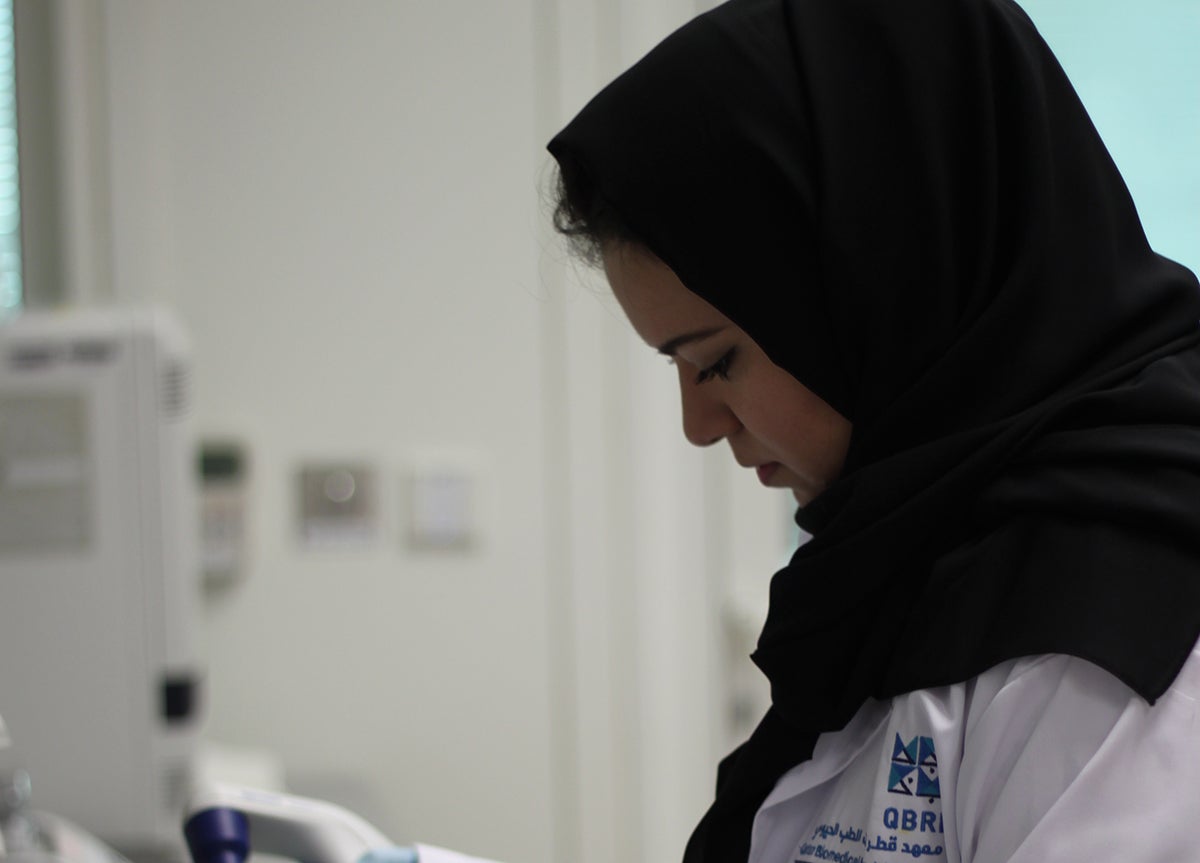
In this interview, Dr. Marwan Noel Sabbagh, a key opinion leader in Alzheimer's disease research, and Dr. Nasser H. Zawia, Research Director at Qatar Biomedical Research Institute (QBRI), part of Hamad Bin Khalifa University (HBKU), discuss important aspects related to Alzheimer's disease (AD). They also highlight their collaboration aimed at translating research into clinical care.
Dr. Marwan Noel Sabbagh
As a leading investigator for many prominent national and global AD prevention and treatment trials, please tell us about the latest developments.
During my investigations into AD - the most common type of dementia - I came across several drugs in late-stage clinical trials. Specifically, three monoclonal antibodies are finishing clinical trials: lecanemab, gantenerumab, and donanemab. Monoclonal antibodies (a type of protein made in the lab) are meant to attach to a substance called amyloid beta, which forms plaques in the brain of people with AD. By attaching to amyloid beta, the medicine is expected to help clear the plaques away and delay the worsening of the disease. There are several drugs in development for the treatment of the neuropsychiatric features of AD as well.
In your view, and based on the latest scientific update, how effective is aducanumab, the FDA-approved Alzheimer's drug?
As background, the US Food and Drug Administration (FDA) awarded aducanumab accelerated approval for AD treatment in June 2021.
Aducanumab has modest efficacy, with around a 22% difference between treatment and placebo. Its announcement was complicated by reports of futility and positivity on only one of the two studies in the Phase III trial. Though brief, I believe many investigators are looking beyond aducanumab to the newer monoclonal antibodies.
Are we close to finding a diagnostic tool for early AD diagnosis? Can biomarker research help?
The diagnostic tools do exist, and biomarkers are critical for an early diagnosis. The Amyloid PET (positron emission tomography) scan, which visualizes plaques present in the brain, is approved and available. Tau PET imaging, which detects the tau protein pathology that accumulates abnormally in the brain of people with AD/other dementias, is approved and available. Cerebrospinal fluid (CSF) testing for AD is approved and available. The PrecivityAD test developed by C2N Diagnostics relies on quantifying Amyloid beta 42/40 ratio is approved and available. This innovative blood test determines the likelihood of a patient having amyloid plaques in the brain. Plasma tests for phosphorylated tau (p-tau) 181 or 217, which are good predictors of brain amyloid and tau, are in development. These plasma tests could be approved and available soon.
Several of your books target the general public. Can you talk about your contributions and the importance of public awareness and community outreach?
“The Alzheimer’s Answer: Reduce Your Risk and Keep Your Brain Healthy” and “The Alzheimer’s Prevention Cookbook: 100 Recipes to Boost Brain Health” both target the public. This reflects the tremendous focus on prevention right now, in addition to the focus on new treatments. We know the risk factors associated with developing AD, and multiple global studies are underway to reduce the risk. That includes the Worldwide FINGER study, the first randomized controlled trial showing it is possible to prevent cognitive decline using a multidomain lifestyle intervention among older at-risk individuals.
The Lancet Commission and the World Health Organization (WHO) report that lifestyle interventions, including exercise, diet, sleep, social interactions, etc., and medical interventions, such as blood pressure (BP) management and sensory impairment, can reduce the risk of AD by up to 30%.
Dr. Nasser Hussein Zawia
What is the importance of the link between researchers and clinicians?
Researchers and clinicians are like stereoisomers (molecules with the same number of atoms but differ in the 3D orientations of their atoms in space). Researchers focus on the basic, translational side of trying to discover a specific treatment or therapy. The clinicians then focus on the application part of the discoveries and test it on humans. Clinicians work with humans, so they understand the issue’s relevance and from which angle it should be tackled, thus guiding the researcher on where to look and dig deeper.
One of your research areas is the environmental risk factors for AD. Tell us about the ongoing research and important findings.
Our pioneering research provided evidence that there might be a relationship between early-life exposure to toxins and late-life development of symptoms and the upregulation of biomarkers and behaviors commonly found in Alzheimer’s patients. The evidence was produced using animal models, exposing them briefly at birth to a toxin, then aging them until the end of their life. This latent effect was defined by us as a developmental basis for AD. Thereafter, all the biomarkers and pathology associated with AD were measured. We later elucidated the epigenetic mechanisms that mediated such latent responses through reprogramming of genes involved in AD pathology.
Currently, more people and environmental agencies are working on epigenetics (how environmental influences change gene activity) in an effort to link AD to environmental stressors and pollutants. Our research at QBRI looks at persistent organic pollutants, diet, and biomarkers associated with dementia.
You recently moved to QBRI as a research director and are building your research team to continue your US-based work related to drug treatments for neurodegenerative diseases. Tell us about your drug discovery journey.
For the past 15 years, I have worked on repurposing a drug for the treatment of neurodegenerative diseases. This drug, tolfenamic acid, has been designated by the FDA as a treatment for Frontotemporal Dementia (FTD) and Progressive Supranuclear Palsy (PSP). With Dr. Sabbagh (my stereoisomer), we submitted a phase 2 clinical trial to test this drug on PSP patients.
Here at QBRI, I brought analogues of this drug for further preclinical development. These compounds are safer and more efficacious than the parent drug. Ongoing work at QBRI in collaboration with Scripps Research Institute, part of the research partnership formalized in late 2021, has introduced these drugs into animals to test their safety, tolerability, and ability to penetrate the brain. We are also conducting extensive omics profiling to identify on and off-targets for these compounds and to define the scope of their impact on the brain.
What will the benefit of your drug be in the future after going through its current phase of clinical testing in the US?
The clinical drug tested in the US in collaboration with Dr. Sabbagh and the Cleveland Clinic is specific to PSP, an atypical type of Parkinson’s disease. The drug is designed to test if biomarkers associated with PSP can be lowered and the cognitive function of the patients improved. The main hallmark of this disease is called tau. If we can lower the biomarkers of those tangles formed by tau, then this application can work on diseases like AD and other brain-related diseases. This would benefit the Qatari population and people across the region suffering from such conditions.
* Dr. Marwan Noel Sabbagh, FAAN, is Professor of Neurology, Alzheimer's and Memory Disorders Division, Barrow Neurological Institute, Research Professor, University of Arizona College of Medicine-Phoenix, and Clinical Professor of Neurology, Creighton University.
* Dr. Nasser H. Zawia is the Research Director at QBRI. He is a former dean and professor of biomedical sciences at the University of Rhode Island. His research focuses on environmental risk factors for Alzheimer’s disease and discovering new treatments for neurodegenerative diseases.




